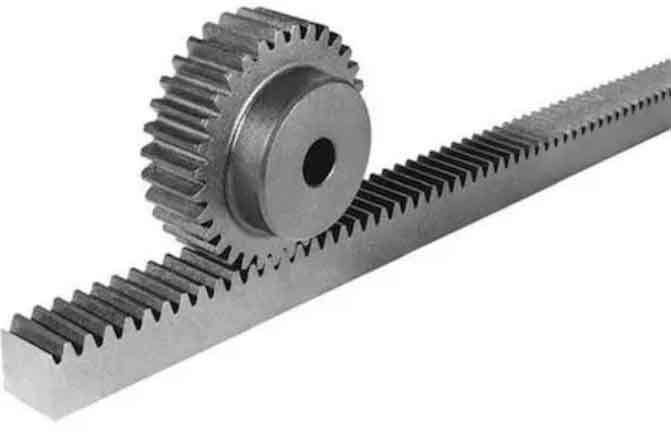
When considering linear motion systems, rack and pinion gears are just one of several options available. Each system has its advantages and limitations, making them suitable for different applications. Here’s a comparison of rack and pinion gears with other common linear motion systems:
1. Rack and Pinion Gears:
Advantages:
- Precise linear motion with minimal backlash.
- High mechanical efficiency, translating most of the input power into linear motion.
- Compact design, suitable for space-constrained applications.
- High load-carrying capacity, making them suitable for heavy-duty tasks.
- Smooth and quiet operation due to gradual tooth engagement.
Limitations:
- Limited travel distance based on the rack length.
- Requires precise alignment and assembly for optimal performance.
- Not suitable for extremely high-speed applications.
2. Ball Screw Systems:
Advantages:
- High precision and repeatability.
- Excellent efficiency, especially at low speeds.
- Minimal backlash, leading to accurate positioning.
- Capable of handling both axial and radial loads.
- Can achieve high speeds in some configurations.
Limitations:
- Higher cost compared to rack and pinion gears.
- More complex design and assembly.
- Requires periodic maintenance, such as lubrication and ball nut replacement.
3. Linear Guide Rails and Bearings:
Advantages:
- Smooth and low-friction motion.
- High precision and repeatability.
- Wide range of sizes and load capacities.
- Can support both linear and rotary motion.
Limitations:
- Usually requires an additional actuation mechanism (e.g., a lead screw or belt drive) for motor-driven motion.
- May require more space compared to rack and pinion gears.
4. Belt and Pulley Systems:
Advantages:
- Cost-effective for low to medium load applications.
- Low friction and smooth motion.
- Simple design and easy implementation.
Limitations:
- Limited precision compared to other systems like ball screws and rack and pinion gears.
- Stretching and wear of the belt can impact accuracy and repeatability.
- May not be suitable for high-load or high-speed applications.
5. Linear Motors:
Advantages:
- Direct-drive system with no mechanical components like gears or screws.
- High acceleration and speed capabilities.
- Excellent precision and repeatability.
- Low maintenance and wear-free operation.
Limitations:
- High cost compared to other linear motion systems.
- Requires careful cooling and thermal management.
- May have limited load-carrying capacity compared to other systems.
The choice between these linear motion systems depends on factors such as the specific application requirements, precision needs, load capacity, speed, budget constraints, and available space. Designers and engineers should carefully evaluate each option and select the system that best aligns with the demands of their particular application.
